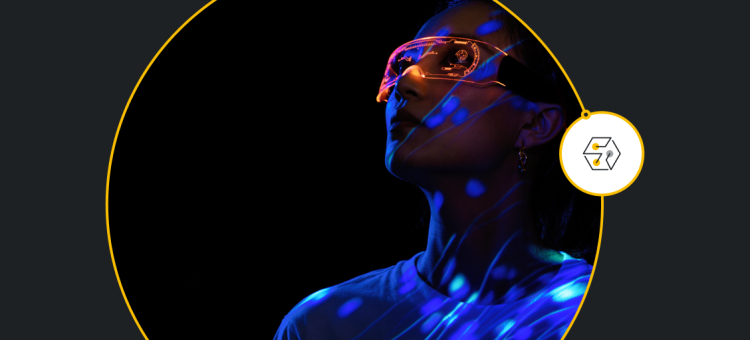Key findings:
- Concern about TV and film delays as a result of the WGA and SAG-AFTRA strikes is overshadowed by concern about AI; 35% say seeing familiar actors on strike makes them pay more attention to concerns about workers being replaced by AI, and 44% are more concerned about how AI can impact workers after hearing about the strikes.
- While some support using AI for special effects (42%) and generating voices for animated characters (38%), far fewer support creating “digital twins” to replace actors in movies in which they did not act (19%).
- Older Americans are less confident they can tell when a character, voice, or image is AI-generated (23% of those 65 and up are somewhat or very confident, compared with 55% of those ages 18-34) and are less likely to go see a movie with an all-AI cast (81% of those 65 and up say they wouldn’t see it, compared with 62% of those ages 18-34).
Concern about the WGA and SAG-AFTRA strikes delaying TV and film is overshadowed by concern about AI
As Hollywood shuts down over the Writer’s Guild of America (WGA) and Screen Actors Guild (SAG-AFTRA) strikes, Americans are taking the side of the actors and writers, learning more about how AI might affect their own jobs, and are thus far unfazed that their favorite shows and new movies will be delayed.
According to a new study by SurveyMonkey conducted July 18-20, only 23% of U.S. adults are concerned that the strikes will delay shows or upcoming movies. Instead, the focus is on the impact of AI, not just on Hollywood but on workers in every industry.
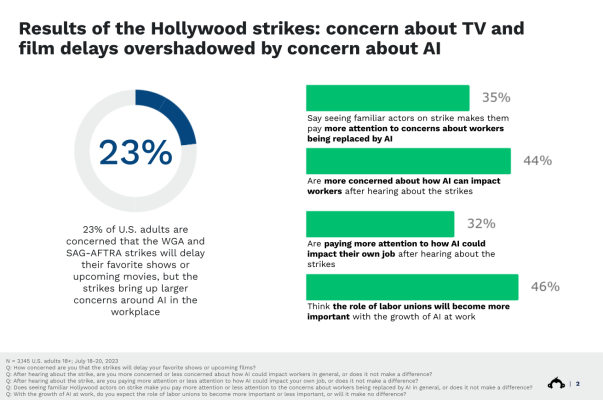
More than one-third of Americans (35%) say that seeing familiar actors on strike is making them pay more attention to concerns about workers being replaced by AI. After hearing about the strikes, 44% are more concerned about how AI can impact workers in general, and 32% are paying more attention to how AI could impact their own job. These strikes may have the potential to influence labor across industries, with 46% of Americans saying they think the role of labor unions will become more important with the growth of AI at work.
Public support is low for using AI to make TV and movies
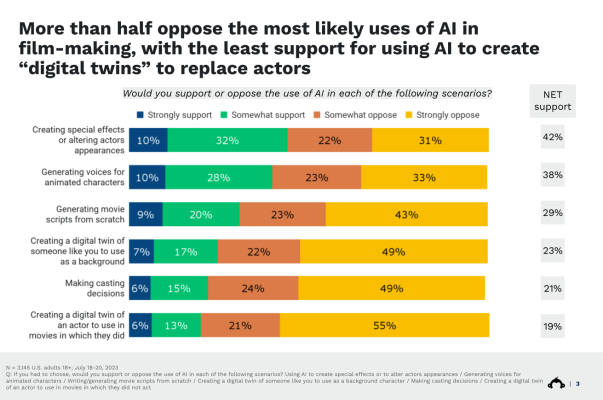
Americans are generally unsupportive of AI use cases in the TV and film industries. Of the six use cases we asked about, none had support from even half of U.S. adults. The most-supported use case is creating special effects or altering actors’ appearances (42% support). While very few support creating a “digital twin” of an actor to use in movies in which they did not act (19% support), more are supportive of using AI to generate voices for animated characters (38%). Fewer support using AI to generate movie scripts from scratch (29%) or to make casting decisions (21%). Even the possibility of seeing themselves in a movie doesn’t move the needle; only 23% support creating a “digital twin” of someone like themselves to use as a background character.
AI isn’t replacing your favorite actors or writers anytime soon
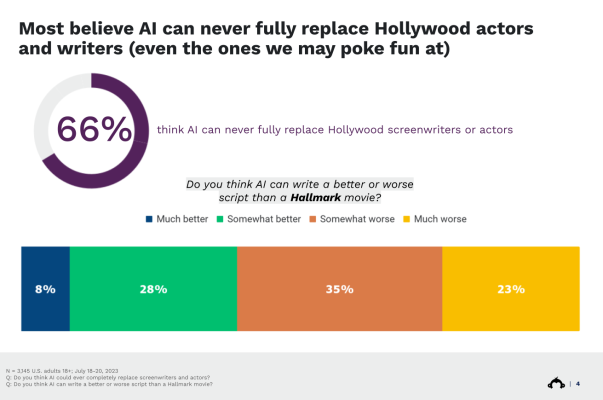
Human writers and actors aren’t going anywhere, if public sentiment is to be believed. Two-thirds of U.S. adults (66%) believe AI will never fully replace Hollywood screenwriters or actors. Even when compared to Hallmark movies–heartwarming but generally formulaic–most (58%) think AI would write a worse script.
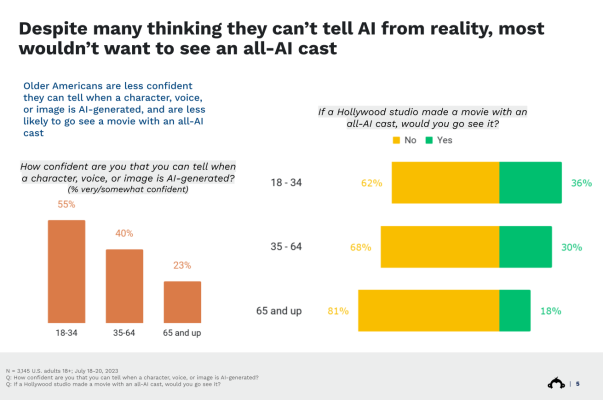
If Hollywood did make a movie with an all-AI cast, most (69%) say they probably or definitely wouldn’t go see it. Young people are the most willing to see an all-AI movie (36% of 18-34 year olds would see it, compared with 18% of those 65 and up).
But even with this opposition, only 41% of Americans are confident they can tell when a character, voice, or image is AI-generated, including 55% of 18-34 year olds, 40% of 35-64 year olds, and just 23% of those 65 and up. It may be possible that you’ve seen AI in movies already.
Read more about our polling methodology here.
Click through all the results in the interactive toplines below:
